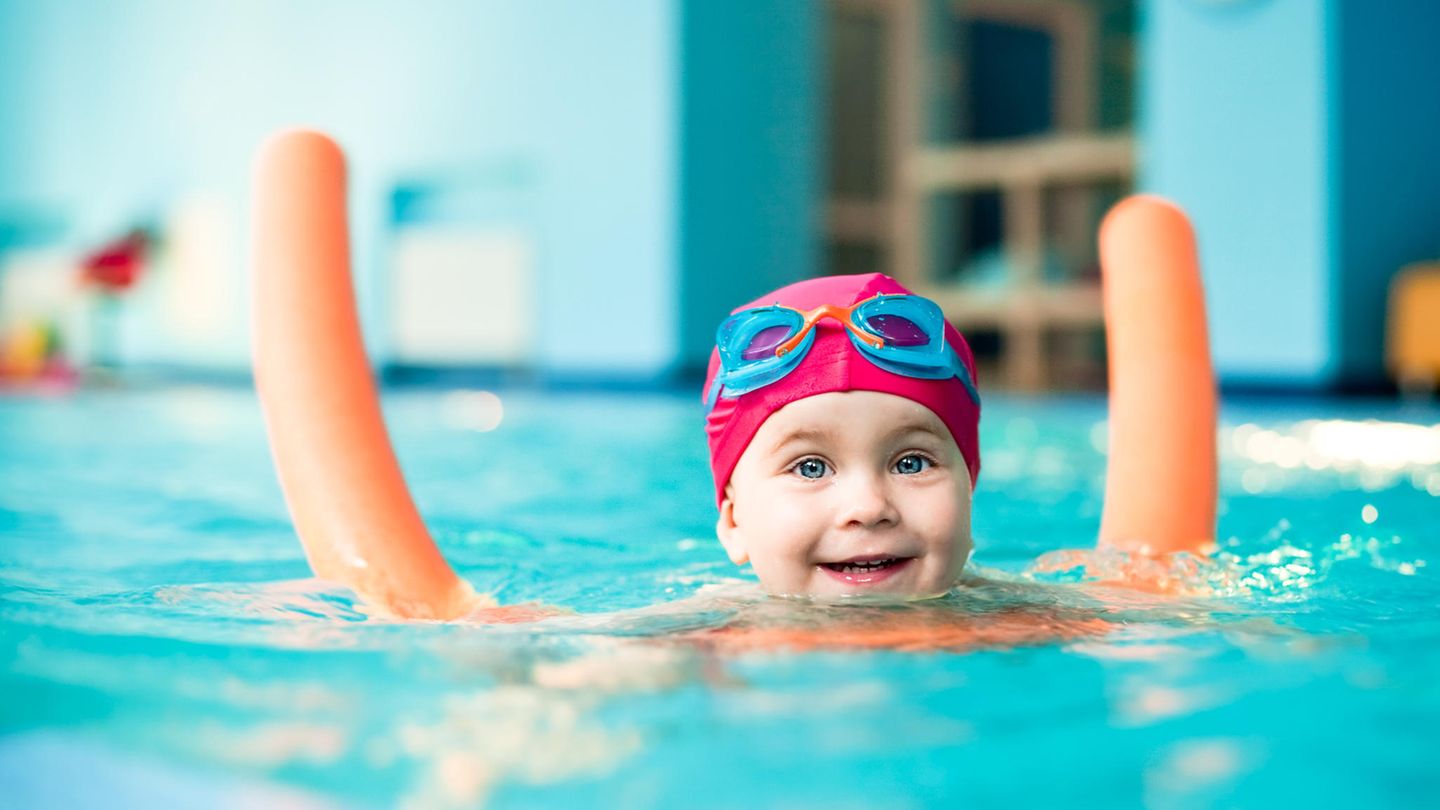Play it safe
Swimming aids for children: Learn to swim safely as a water muffle
Swimming aids such as pool noodles or swimming belts should take the fear of cool water and arouse their ambition. These tools are suitable for small water rats.
In addition to running, swimming is one of the most natural (and healthiest) ways to move on. In contrast to running, which at some point every little person succeeds without greater difficulties or even training, swimming has to be learned. And it is precisely here that it is currently hugging in Germany. Less than 15,000 seahorses were sewn on swimming trunks and swimsuits in 2020. A colossal slump. In 2019, almost 50,000 girls and boys still achieved the important swimming badge. This sobering balance sheet was drawn by the German Life Rescue Society (DLRG) after the second Corona summer 2021. Germany is becoming the country of non-swimmers.
“Around 70,000 children could not learn to swim in 2020,” said Frank Villmow from the Presidium of the DLRG. In the meantime, the swimming pools have long been open and with them the swimming instructors have resumed their work. But the demand for swimming courses often exceeds the offer many times over. It is all the more sensible that parents bring their children into the wet element themselves. Because the safer you are, the easier the swimming course with the profile teachers will be easier later. In 2022, a survey of 37 percent of the parents surveyed described their child as a non -swimmer. It was about the swimming skills of children between six and ten years.
Various swimming aids make it easier to jump into the unknown. You can find out which tools are suitable for which age and how to use them correctly in this article.
1. Swimming aid class A: Water habituation for babies
As with many other things, babies and toddlers also develop very differently when it comes to bathing and swimming. As fearless as some of them rage or storming into the paddock in the outdoor pool at the time of a few months or jared, some children are still in primary school as anxious when they come close to a swimming pool. In official courses, babies and infants can familiarize themselves with the lively element of water from the fourth month of life. This is only about introducing the little ones to the cool water, taking away the fear. As “swimming helpers” in the broadest sense small mats and the Most popular. They belong to class A and should do nothing other than keep the babies afloat. The little ones are pulled through the water or pushed. Depending on the size, these tools accompany children up to the age of three. When buying, in addition to the CE test mark, attention should also be paid to the weight for which the swimming aid is approved.
2. Class B: toddlers and beginners
In class B it is slowly going to be made. Swimming aids in this category always earn their name. Because instead of being chauffeured across the water, the beginners have to do something themselves to stay over the same. Classics and favorites of many parents are the good old swing. The inflatable pillows () are stripped across the youngsters. In the meantime, models are on the market where the wings are connected to the chest. This ensures even more buoyancy (and at best for less fear). They usually consist of a light, filled polyester tissue and don’t even have to be blown up. Like that . In both variants, the child’s head area remains safely above water. Nevertheless, they can move and try out quite freely. The principle is similar with the other class B swimming aids. With one exception.
So -called Swimming pillowlike that are attached with a kind of belt under the arms or fuselage. The actual pillows, in this case made of cotton, are filled with air and bring the little swimming students into the right water position. In order to slowly wean it from the swimming aid, some pressure is gradually taken out of the pillow.
consist of light EVA foam. Similar to weight lifting, more or fewer slices can be clicked together and, together with a flexible cuff, can be put over the arms. The principle: the safer the little swimmer in the water, the fewer windows have to be “mounted”. Because the following applies: the fewer slices, the less buoyancy. A small advantage over the inflatable variant: According to the manufacturer, the swimming panes are also suitable for children and adolescents who want to learn to swim a little later. The maximum load limit is therefore 60 kilograms.
Children have a little more legroom who have the water with one explore. Otherwise, the popular swimming aids work around the stomach (Important: not around the hip!) can be strapped, similar to swimming windows. Depending on how safe the child moves in the water, individual styrofoam or foam elements can be threaded or removed. When buying a swimming belt, make sure that the swimming aid is equipped with buckles and safety closure. The length of the belt should also be variable and adjustable in just a few simple steps. Also belong in class B of swimming aids. The swimming aids for children from two years of age who can keep the head above the water surface are recommended, have some swimming experience and already create the first swimming movements. They should not be confused with lifeguards, because life jackets are not designed to keep help and unconscious people above water. Learning west for swimming is available as a inflatable variant or with flexible and interchangeable buoyancy.
3. Class C: The kick for small and large
Class C is less about security, but about tools that support small (and big) swimmers in training and certain movements. One of the most important aids in this category is that also called kickboard, which is located even with high -performance athletes during the training on the edge of the pool. It is also clear: Class C swimming aids only belong in the hands of safe swimmers who the board or the can hold it yourself. As with all other swimming aids, the so -called pool pasta should only be used by the children under supervision. Among other things, swimming boards are used to learn the right leg stroke, to train and improve it. Similarly, the focus is on arm power and technology when the board is clamped between the legs.
*This article contains so-called affiliate links to products in online shops. If a user clicks on it and buys something, the publisher receives a commission from the dealer, not from the manufacturer. Of course, where and when you buy a product is up to you.
Source: Stern
I am Pierce Boyd, a driven and ambitious professional working in the news industry. I have been writing for 24 Hours Worlds for over five years, specializing in sports section coverage. During my tenure at the publication, I have built an impressive portfolio of articles that has earned me a reputation as an experienced journalist and content creator.




